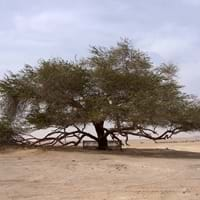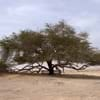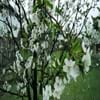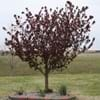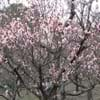Life Span
Perennial
Perennial
Origin
Southwestern United States
Eastern Asia
Types
Prosopis chilensis, Prosopis juliflora
Actinidia arguta, Actinidia giraldii, Actinidia hypoleuca
Habitat
Desert, Dry areas
Dappled Shade, open Woodlands
USDA Hardiness Zone
6-9
3-8
Sunset Zone
Not Available
1a, 1b, 2a, 2b, 3a, 3b, 4, 5, 6, 7, 8, 9, 14, 15, 16, 17, 18, 19, 20
Habit
Arching/Fountain-shaped
Vining/Climbing
Flower Color
Yellow
White, Ivory
Flower Color Modifier
Bicolor
Bicolor
Fruit Color
Tan
Green, Yellow green
Leaf Color in Spring
Blue Green
Green, Dark Green
Leaf Color in Summer
Blue Green
Dark Green
Leaf Color in Fall
Blue Green
Dark Green
Leaf Color in Winter
Not Available
Light Green
Plant Season
Spring
Spring, Summer, Fall
Sunlight
Full Sun
Full Sun, Partial Sun
Type of Soil
Clay, Loam, Sand
Loam
The pH of Soil
Acidic, Neutral, Alkaline
Neutral
Soil Drainage
Well drained
Well drained
Bloom Time
Spring
Spring, Late Spring, Early Summer
Tolerances
Drought, Salt
Shade areas
Where to Plant?
Ground
Ground, Pot
How to Plant?
Grafting, Seedlings
Grafting, Stem Cutting
Plant Maintenance
Medium
Low
Watering Requirements
Keep ground moist
Average Water Needs, Requires regular watering
In Summer
Ample Water
Regular watering required
In Spring
Moderate
Moderate
In Winter
Ample Water
Average Water
Soil pH
Acidic, Neutral, Alkaline
Neutral
Soil Type
Clay, Loam, Sand
Loam
Soil Drainage Capacity
Well drained
Well drained
Sun Exposure
Full Sun
Full Sun, Partial Sun
Pruning
Prune in early spring, Remove all watersprouts, Remove dead leaves
Remove damaged leaves, Remove dead branches, Remove dead leaves
Fertilizers
Use nitrogen rich soil
Apply 10-10-10 amount, fertilize twice a year
Pests and Diseases
Armored scales, Candidula scale, Flatheaded borers, Mealybugs, Mesquite girdler, Mesquite scale, Oldman longhorn, Roundheaded borers, Stem gall rust
Botrytis head rot, Japanese Beetles, Leaf Rollers, Nematodes, Phytophthora, Root rot, Sclerotinia blight, Spider mites, Thripes
Plant Tolerance
Drought, Salt
Shade areas
Flower Petal Number
Not Available
Single
Fragrant Bark/Stem
Yes
No
Foliage Texture
Fine
Medium
Foliage Sheen
Matte
Glossy
Allergy
Asthma, Rhinitis
Not Available
Aesthetic Uses
Not Used For Aesthetic Purpose
Cottage Garden
Beauty Benefits
Improve hair condition
Not Available
Environmental Uses
Air purification
Shadow Tree
Medicinal Uses
Conjuctivitis, Emetic, Eye Problems, Headache, Laxative, Pain in gums, Stomach aliments, Sunburn
Antioxidants, Fiber, Folate, Rich in Potassium, Vitamin C
Part of Plant Used
Inner Bark, Leaves, Sap
Fruits
Other Uses
Used as a dye, Used As Food, Used for its medicinal properties, Wood is used for making furniture
Grown for shade
Used As Indoor Plant
No
No
Used As Outdoor Plant
Yes
Yes
Garden Design
Shade Trees, Street Trees
Edible, Feature Plant, Vine
Botanical Name
PROSOPIS glandulosa
ACTINIDIA arguta
Common Name
Mesquite
Hardy Kiwi
In Hindi
उत्तर पश्चिमी अमरीका का एक फलीदार पेड
हार्डी कीवी
In German
Mesquite
Hardy Kiwi
In Spanish
mezquite
kiwi hardy
In Greek
Είδος μιμόζας
σκληραγωγημένα ακτινίδια
In Portuguese
Mesquite
kiwi Hardy
In Polish
Mesquite
hardy kiwi
In Latin
Mesquite
Hardy kiwi
Phylum
Magnoliophyta
Magnoliophyta
Class
Magnoliopsida
Magnoliopsida
Family
Fabaceae
Actinidiaceae
Clade
Angiosperms, Eudicots, Rosids
Angiosperms, Asterids, Eudicots
Tribe
Not Available
Not Available
Subfamily
Not Available
Actinidiaceae
Number of Species
Not Available
Not Available
Importance of Mesquite Tree and Hardy Kiwi
Want to have the most appropriate plant for your garden? You might want to know the importance of Mesquite Tree and Hardy Kiwi. Basically, these two plants vary in many aspects. Compare Mesquite Tree and Hardy Kiwi as they differ in many characteristics such as their life, care, benefits, facts, etc. Every gardener must at least have the slightest clue about the plants he wants to plant in his garden. Compare their benefits, which differ in many ways like facts and uses. The medicinal use of Mesquite Tree is Conjuctivitis, Emetic, Eye Problems, Headache, Laxative, Pain in gums, Stomach aliments and Sunburn whereas of Hardy Kiwi is Antioxidants, Fiber, Folate, Rich in Potassium and Vitamin C. Mesquite Tree has beauty benefits as follows: Improve hair condition while Hardy Kiwi has beauty benefits as follows: Improve hair condition.
Compare Facts of Mesquite Tree vs Hardy Kiwi
How to choose the best garden plant for your garden depending upon its facts? Here garden plant comparison will help you to solve this query. Compare the facts of Mesquite Tree vs Hardy Kiwi and know which one to choose. As garden plants have benefits and other uses, allergy is also a major drawback of plants for some people. Allergic reactions of Mesquite Tree are Asthma and Rhinitis whereas of Hardy Kiwi have Not Available respectively. Having a fruit bearing plant in your garden can be a plus point of your garden. Mesquite Tree has showy fruits and Hardy Kiwi has no showy fruits. Also Mesquite Tree is not flowering and Hardy Kiwi is not flowering . You can compare Mesquite Tree and Hardy Kiwi facts and facts of other plants too.
